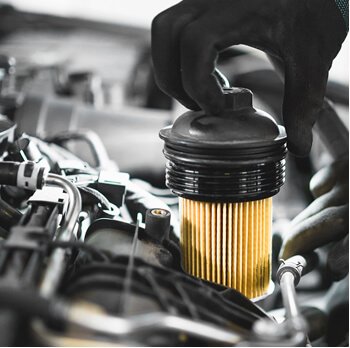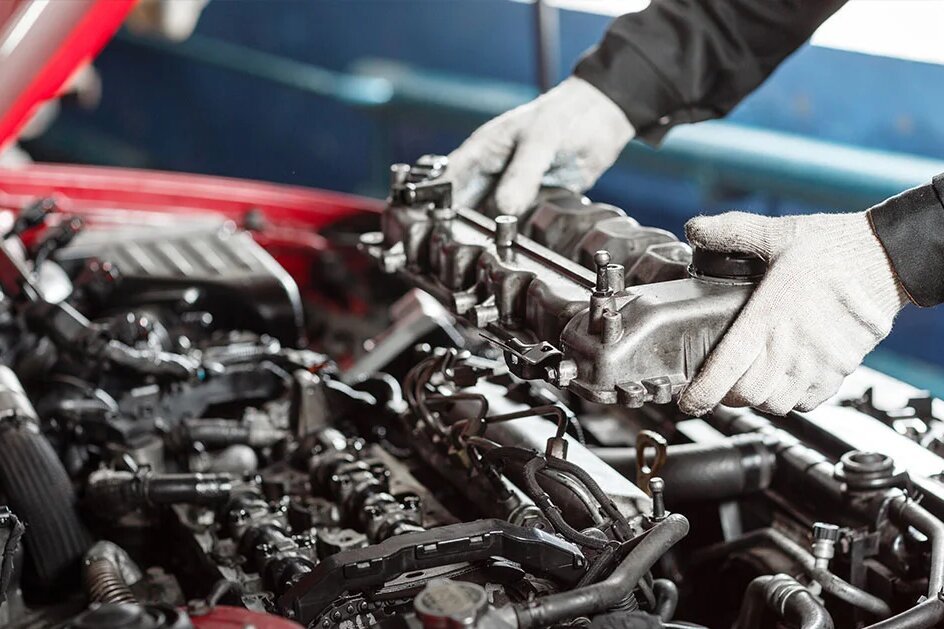Contacts Us
Have a Question?

Engine Services
Engine Replacement Service: Everything You Need to Know
When your car’s engine is failing, worn out, or damaged beyond repair, an engine replacement becomes a serious but often necessary option. As one of the most major repairs for a vehicle, it’s a decision that requires understanding the process, cost, benefits, and pitfalls. In this long-form guide, we’ll cover:
What “engine replacement” means
Signs your engine may need replacement
Options (repair vs. rebuild vs. replace)
Types of replacement engines (new, remanufactured, used)
Step-by-step process for replacing an engine
Costs and pricing factors
Warranties and guarantees
Risks, challenges, and pitfalls
How to choose a reliable auto shop
After the replacement: break-in and maintenance tips
FAQs
Let’s dive in.
What Does “Engine Replacement” Mean?
An engine replacement means removing the existing engine block (and often associated components) in a vehicle, and installing a new or re-engineered engine in its place. This differs from:
Engine repair: fixing or replacing individual components (e.g. head gasket, pistons, crankshaft).
Engine rebuild: disassembling the original engine, machining parts, replacing worn components, and re-assembling it.
Replacement often is preferred when the cost of repair or rebuild approaches or exceeds the cost of a replacement, or when damage (e.g. cracked block) makes a rebuild impractical.
In essence, it’s giving your car a fresh heart — either fully new, remanufactured, or sometimes from a donor vehicle.
Symptoms That Indicate You May Need a Full Engine Replacement
Before jumping to replacement, mechanics will attempt diagnostics and repairs first. But these signs often point toward replacement rather than patches:
| Symptom | What It Could Indicate |
|---|---|
| Severe knocking or rod slap noise | Worn connecting rods or bearings — engine internals failing |
| Major coolant or oil leaks (cracked block or head) | Damage beyond gasket repair |
| Low compression across all cylinders | Worn piston rings, cylinder walls badly worn |
| Cracked engine block or head, warped surfaces | Structural damage not repairable |
| Complete seizure (engine locked up) | Catastrophic failure, often requires replacement |
| Burnt, melted, or damaged internals due to overheating or detonation | Components ruined beyond reuse |
| Engine reaches mechanical limits of repair | Age, wear, and multiple repairs accumulated |
If you see multiple symptoms together, replacement is often the most reliable long-term solution rather than patch fixes.
Options: Repair vs. Rebuild vs. Replace — What’s Best?
1. Repair (Component-Level Fixes)
This is fixing or replacing faulty parts — e.g. replacing pistons, bearings, head gasket, camshafts, etc. It’s often cheaper and faster, but it assumes no major structural damage to the block, head, or internals.
Pros:
Lower cost (for limited damage)
Quicker turnaround
Reuse of original engine serial / configuration
Cons:
May only be a short-term fix if underlying wear persists
If too many parts are worn, cost can escalate
2. Rebuild / Overhaul
Mechanic disassembles the engine, inspects, machines or replaces parts, and reassembles with new bearings, rings, gaskets, etc. It’s often done when the block is still structurally sound.
Pros:
Generally more reliable than many repairs
Retains original engine block
More control over component quality
Cons:
Labor-intensive
Potential for hidden damage (once disassembled)
May get close to cost of replacement depending on parts

Trust Our Products
For over 60 years, Car Repair Service has been helping drivers across North America maintain their vehicles. With ASE-certified mechanics in all of our stores, we can take care of all of your auto repair and maintenance needs.
From oil changes, filter replacements, and fluid flushes to brakes and brake repair, shocks and struts, muffler repair, tires, and wheel alignment, we’ve got you covered. Use the quick links in the gold bar to book an appointment at your Car Repair Service store today!
Types of Replacement Engines
When going the replacement route, you generally have three main types of engines to choose from:
A. Brand New (OEM / Factory Fresh)
These come straight from the manufacturer or licensed OEM suppliers.
Pros: Best reliability, warranty, compatibility
Cons: Highest cost
B. Remanufactured / Reconditioned
A remanufactured engine is one that has been disassembled, cleaned, machined, components replaced, and reassembled to OEM specs or better.
Pros: Good balance of cost and quality
Cons: Warranty may be weaker than new, quality depends on reman shop
C. Used / Donor Engines
Pulled from another vehicle of similar make/model, often from salvage yards or dismantlers.
Pros: Lowest cost
Cons: Higher risk of unknown wear, less warranty, possible early failure
In many high-end shops, the remanufactured option is often the “sweet spot”—better reliability than used but less expensive than brand new.
Process: Step by Step Guide to Engine Replacement
Here’s a detailed walkthrough of how an engine replacement is typically performed in a professional repair shop:
Step 1: Inspection & Diagnosis
Scan and read engine control module (ECU) codes
Conduct compression and leak-down tests
Inspect oil, coolant systems, and block for cracks
Determine whether the engine is repairable or needs to be replaced
Step 2: Quotation & Customer Approval
Provide a breakdown of parts, labor, and any possible extras (e.g. wiring harness adaptation)
Discuss options: new / reman / used
Clarify warranty, timeline, and any additional work required
Step 3: Preparation & Parts Gathering
Source the replacement engine
Order necessary gaskets, seals, fluids, mounts, sensors
Inspect related systems (cooling, fuel, electrical)
Photograph and label all connections before disassembly
Step 4: Disassembly & Removal
Disconnect battery, wiring harnesses, sensors
Remove ancillary systems: intake, exhaust manifold, alternator, AC compressor, etc.
Remove engine from mounts
Use engine hoist / crane to carefully take out the old engine
Step 5: Inspection & Prepping New Engine
Inspect replacement engine for shipping damage
Verify compatibility (mount points, bolt patterns, sensor ports)
Transfer over needed parts (if required)
Replace wear items: water pump, sensor, belts, pulleys, gaskets
Step 6: Installation
Lower replacement engine in place
Bolt engine mounts, reconnect transmission or motor mounts
Reconnect wiring, sensors, hoses, ducts
Reinstall intake, exhaust, and ancillaries
Step 7: Fluids & Systems Refill
Add oil, coolant, and other fluids
Bleed cooling system, check for leaks
Prime oil system (if needed)
Step 8: Electrical / ECU Setup & Testing
Ensure the correct ECU or engine control software
Program or adapt ECU if the engine is from a different variant
Run diagnostics
Start the engine, check for leaks, noises
Step 9: Break-In Period Monitoring
Monitor engine behavior for first several hours
Perform oil and filter change after break-in interval
Retorque critical bolts if needed
Step 10: Final Inspection & Hand-Off
Perform road test
Check all systems (cooling, fuel, sensors)
Provide customer with paperwork, warranty, maintenance instructions
Cost & Pricing Factors
Engine replacement is expensive. The final cost depends on many variables. Here are the key factors:
| Factor | Impact on Cost |
|---|---|
| Type of replacement engine (new vs reman vs used) | Major influence |
| Vehicle make, model, age, engine complexity | Imports, turbo engines add cost |
| Labor hours / shop rates | Can vary widely by region |
| Ancillary parts, gaskets, sensors, mounts | Many must be replaced |
| Wiring/ECU adaptation or reprogramming | Additional electronics work |
| Modifications for fit / custom work | If engine variant is different |
| Warranty and quality of parts | Better warranty may cost more |
| Taxes, shipping, disposal of old engine | Often overlooked extras |
In many markets, a full replacement (parts + labor) can run anywhere from a few thousand to tens of thousands of euros/dollars, depending on the car. Cheaper used engines might reduce cost, but come with risk.
Warranties, Guarantees & Service Contracts
A trustworthy repair shop should offer:
Parts warranty: Typically 6 months to 2 years
Labor warranty: May cover their workmanship
Mileage cap: Some warranties limit by kilometers
Exclusions: E.g. misuse, aftermarket modifications
Break-in guarantee: Additional inspection or tuning after break-in period
Make sure warranties are in writing and clearly state what is (and isn’t) covered.
Risks, Challenges & Common Pitfalls
Even in experienced hands, engine replacement has pitfalls:
Fitment issues: Mounts, clearance, piping differences
Wiring/Electronics compatibility: Sensor pinouts, ECU mapping
Hidden damage in replacement engine: Contamination, worn parts
Poor break-in practices: Leading to early wear
Flawed seal/gasket installation: Causing leaks
Cooling/improper cooling design: Overheating risk
Wrong torque specs or bolting sequence: Head warping or leakage
Inadequate testing: Failing to catch leaks or sensor errors
Mitigating these requires skilled mechanics, proper planning, and careful execution.
Choosing the Right Auto Shop for Engine Replacement
When selecting a workshop, consider:
| Criteria | What to Ask or Look For |
|---|---|
| Certifications / credentials | ASE, manufacturer-approved, recognized reputation |
| Experience with your vehicle make/model | Specialty in your car type is a plus |
| References / reviews | Ask to see similar replacement jobs |
| Transparent quotes | Clear line-item estimates |
| Warranty policies | Parts and labor coverage |
| Diagnostic & calibration tools | For ECU, sensors, tuning |
| Clean facility and organization | Indicates professionalism |
| Warranty support | Will they do a follow-up or tune-up after break-in? |
Visiting in person and discussing the process can give confidence.
After Replacement: Break-In & Maintenance Tips
Even a new or reman engine needs care after installation. Here are best practices:
Initial run-ins: Avoid full throttle or sustained high RPMs for first 500–1,000 km
Frequent oil changes early: After first ~100–200 km, then again per manufacturer
Check all fluid levels: Oil, coolant, transmission (if opened)
Inspect for leaks or odd noises: During first few drives
Follow torque re-checks: Some critical bolts may need re-torquing
Service cooling and intake systems: Ensure no clogging, good airflow
Regular maintenance schedule: Oil changes, filters, belts, sensors
Watch warning lights: Address any engine or sensor alarms immediately
Proper maintenance ensures long life and helps protect your investment.
Frequently Asked Questions (FAQs)
Q: When is engine replacement better than repair or rebuild?
A: When structural or severe internal damage exists (cracked block, rod damage, extreme wear), or when rebuild costs approach replacement cost.
Q: How long does an engine replacement take?
A: Depends on the vehicle and complexity, but often 2–7 days (or more) in a professional shop.
Q: Can I upgrade or “swap in” a more powerful engine?
A: Yes — but requires more adaptation of wiring, ECU, mounts, cooling, and potentially transmission. It’s more complex and costly.
Q: Will replacing the engine reset my car’s history (e.g. odometer)?
A: No. The odometer and vehicle identity remain intact; only the engine component changes.
Q: Is there any guarantee a replacement engine will last?
A: High-quality new or reman engines with good warranties and professional installation often last many years. Used/donor engines carry more risk.
Q: Should I keep the old engine?
A: You may choose to keep it (for parts or as backup), but most shops will dispose of it responsibly (or charge a disposal fee).
Q: Can engine replacement fix misfires, emissions faults, or performance issues?
A: Yes — especially if the issues were internal. But you still need to ensure sensors, exhaust, and wiring are correct.
Q: What about hybrid or electric vehicles?
A: The “engine replacement” concept differs. For BEVs, it’s battery or motor replacement. For hybrids, more complexity arises with combined systems.